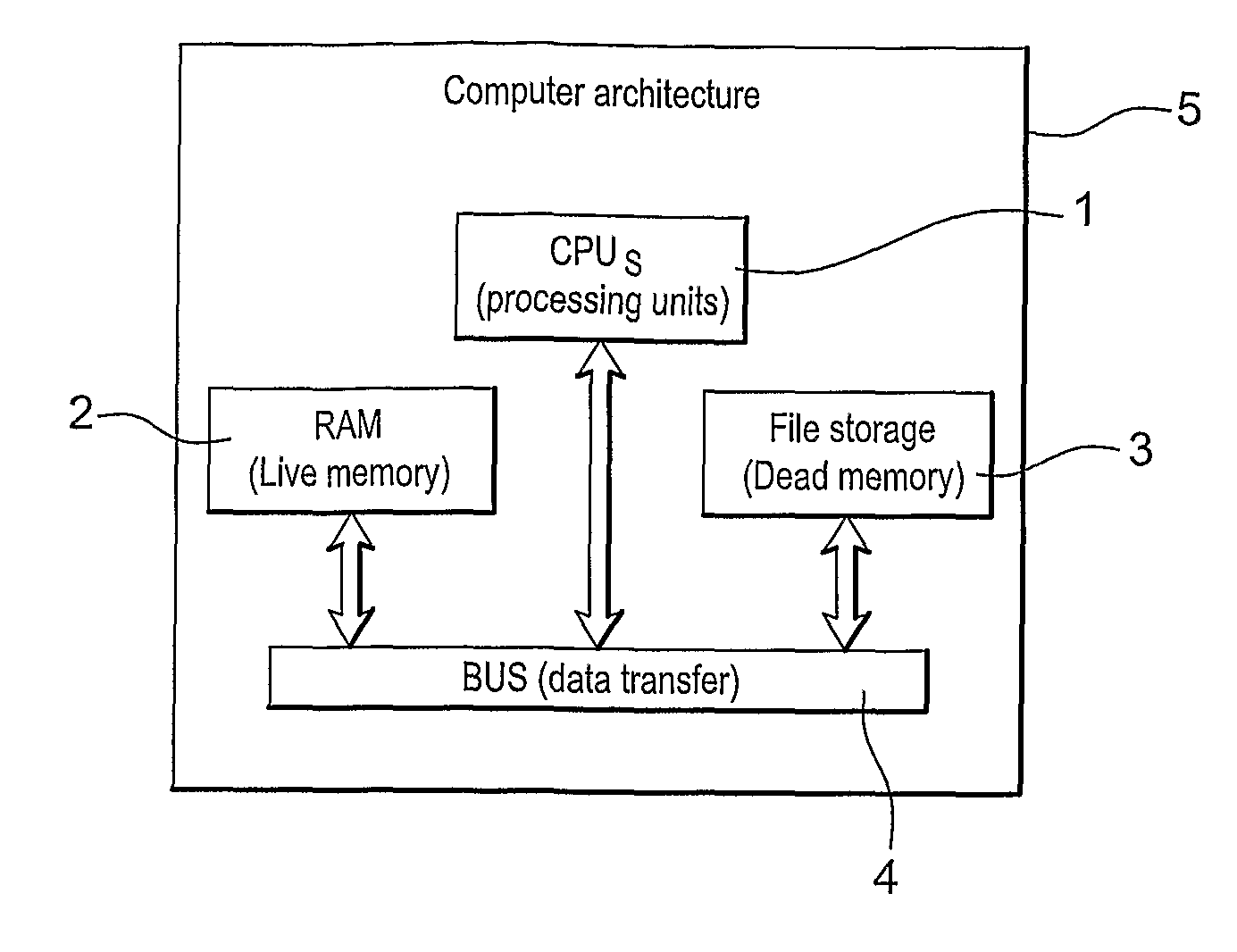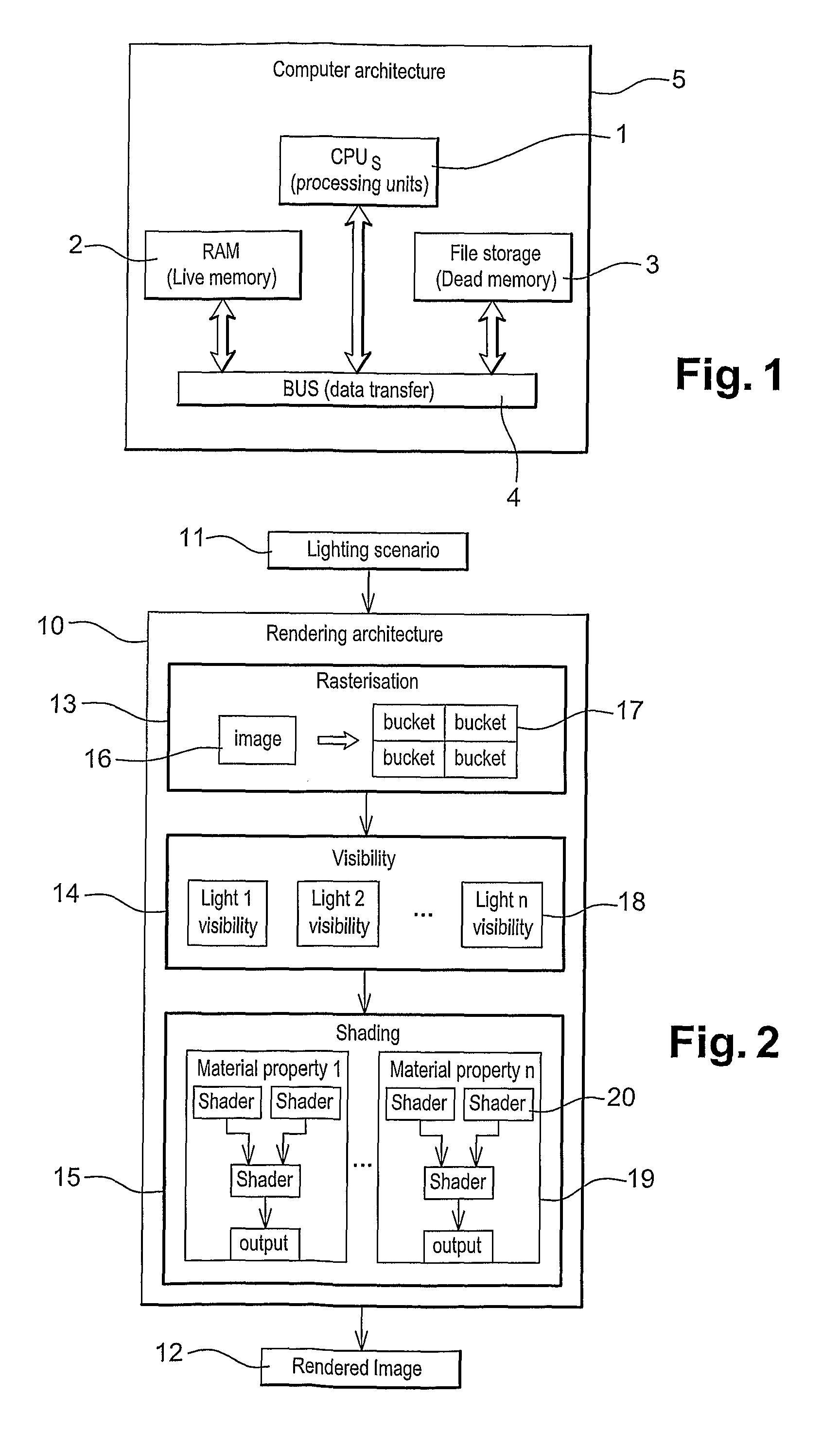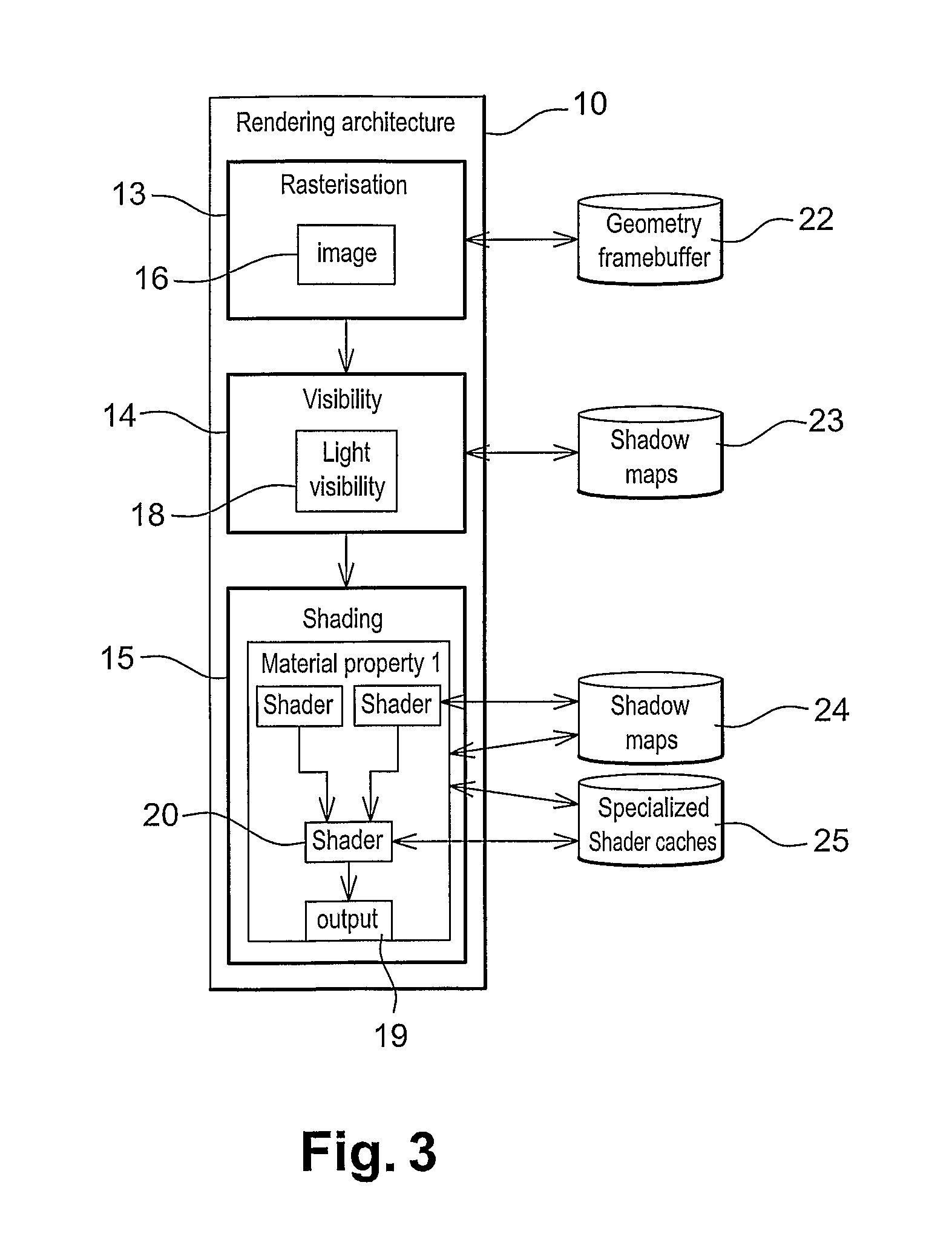Method and system for rendering or interactive lighting of a complex three dimensional scene
a three-dimensional scene and complex technology, applied in the field of three-dimensional scene rendering, can solve the problems of increasing the cost of skilled labor to create 3d images, increasing the number of computations of the same data, and requiring a large amount of time and manual labor to light a 3d scene correctly, so as to improve the interactivity of the lighting process, reduce the number of computations of the same data, and limit the memory resources. the effect of cheap pri
- Summary
- Abstract
- Description
- Claims
- Application Information
AI Technical Summary
Benefits of technology
Problems solved by technology
Method used
Image
Examples
Embodiment Construction
[0034]The drawings and the associated descriptions are provided to illustrate embodiments of the invention and not to limit the scope of the invention. Reference in the specification to “one embodiment” or “an embodiment” is intended to indicate that a particular feature, structure, or characteristic described in connection with the embodiment is included in at least an embodiment of the invention. The appearances of the phrase “in one embodiment” or “an embodiment” in various places in the specification are not necessarily all referring to the same embodiment.
[0035]Throughout the drawings, reference numbers are re-used to indicate correspondence between referenced elements.
[0036]The following description is provided to enable any person skilled in the art to make and use the invention and sets forth the best modes contemplated by the inventor, but does not limit the variations available.
[0037]As used in this disclosure, except where the context requires otherwise, the term “compris...
PUM
 Login to View More
Login to View More Abstract
Description
Claims
Application Information
 Login to View More
Login to View More - R&D
- Intellectual Property
- Life Sciences
- Materials
- Tech Scout
- Unparalleled Data Quality
- Higher Quality Content
- 60% Fewer Hallucinations
Browse by: Latest US Patents, China's latest patents, Technical Efficacy Thesaurus, Application Domain, Technology Topic, Popular Technical Reports.
© 2025 PatSnap. All rights reserved.Legal|Privacy policy|Modern Slavery Act Transparency Statement|Sitemap|About US| Contact US: help@patsnap.com



